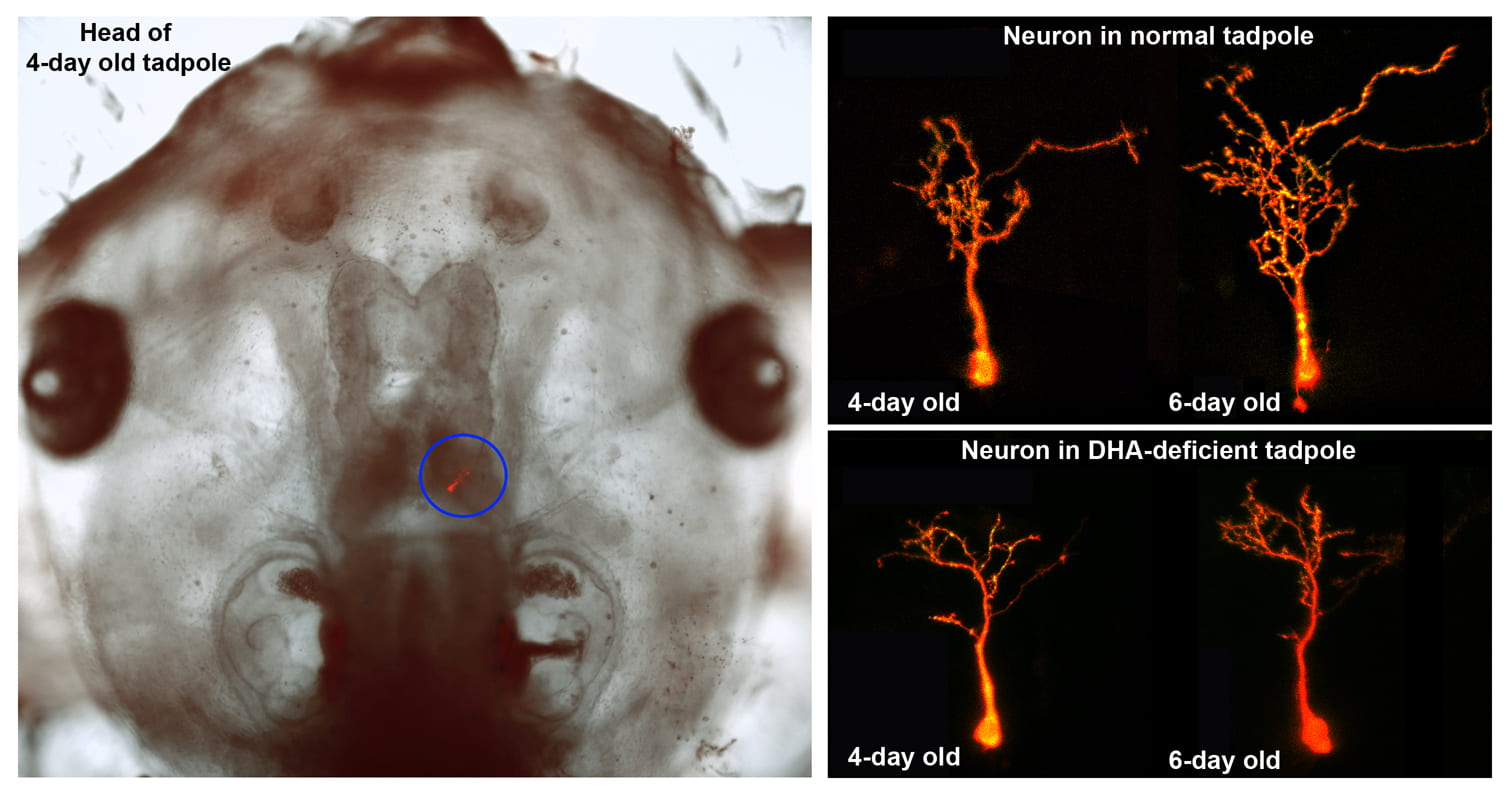Brain development suffers from lack of fish oil fatty acids, UCI study finds
In a study appearing in The Journal of Neuroscience, UCI neurobiologists report that dietary deficiencies in the type of fatty acids found in fish and other foods can limit brain growth during fetal development and early in life. The findings suggest that women maintain a balanced diet rich in these fatty acids for themselves during pregnancy and for their babies after birth.

Irvine, Calif., April 15, 2015 — While recent reports question whether fish oil supplements support heart health, UC Irvine scientists have found that the fatty acids they contain are vitally important to the developing brain.
In a study appearing today in The Journal of Neuroscience, UCI neurobiologists report that dietary deficiencies in the type of fatty acids found in fish and other foods can limit brain growth during fetal development and early in life. The findings suggest that women maintain a balanced diet rich in these fatty acids for themselves during pregnancy and for their babies after birth.
Susana Cohen-Cory, professor of neurobiology & behavior, and colleagues identified for the first time how deficits in what are known as n-3 polyunsaturated fatty acids cause molecular changes in the developing brain that result in constrained growth of neurons and the synapses that connect them.
These fatty acids are precursors of docosahexaenoic acid, or DHA, which plays a key role in the healthy creation of the central nervous system. In their study, which used female frogs and tadpoles, the UCI researchers were able to see how DHA-deficient brain tissue fostered poorly developed neurons and limited numbers of synapses, the vital conduits that allow neurons to communicate with each other.
“Additionally, when we changed the diets of DHA-deficient mothers to include a proper level of this dietary fatty acid, neuronal and synaptic growth flourished and returned to normal in the following generation of tadpoles,” Cohen-Cory said.
DHA is essential for the development of a fetus’s eyes and brain, especially during the last three months of pregnancy. It makes up 10 to 15 percent of the total lipid amount of the cerebral cortex. DHA is also concentrated in the light-sensitive cells at the back of the eyes, where it accounts for as much as 50 percent of the total lipid amount of each retina.
Dietary DHA is mainly found in animal products: fish, eggs and meat. Oily fish – mackerel, herring, salmon, trout and sardines – are the richest dietary source, containing 10 to 100 times more DHA than nonmarine foods such as nuts, seeds, whole grains and dark green, leafy vegetables.
DHA is also found naturally in breast milk. Possibly because of this, the fatty acid is used as a supplement for premature babies and as an ingredient in baby formula during the first four months of life to promote better mental development.
The UCI team utilized Xenopus laevis (the African clawed frog) as a model for this study because it allowed them to follow the progression and impact of the maternal dietary deficit in the offspring. Because frog embryos develop outside the mother and are translucent, the researchers could see dynamic changes in neurons and their synaptic connections in the intact, live embryos, where development can be easily studied from the time of fertilization to well after functional neural circuits form.
They focused on the visual system because it’s an accessible and well-established system known to depend on fatty acids for proper growth and utility.
Miki Igarashi and Rommel Santos of UC Irvine contributed to the study, which was supported by the National Eye Institute (grant EY-011912).
About the University of California, Irvine: Founded in 1965, UCI is the youngest member of the prestigious Association of American Universities. The campus has produced three Nobel laureates and is known for its academic achievement, premier research, innovation and anteater mascot. Led by Chancellor Howard Gillman, UCI has more than 30,000 students and offers 192 degree programs. Located in one of the world’s safest and most economically vibrant communities, it’s Orange County’s second-largest employer, contributing $4.8 billion annually to the local economy. For more on UCI, visit www.uci.edu.
Media access: Radio programs/stations may, for a fee, use an on-campus ISDN line to interview UC Irvine faculty and experts, subject to availability and university approval. For more UC Irvine news, visit wp.communications.uci.edu. Additional resources for journalists may be found at communications.uci.edu/for-journalists.